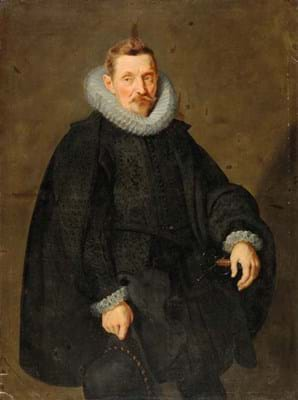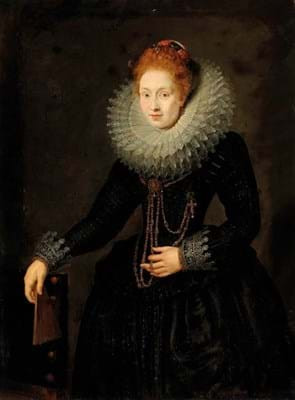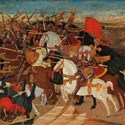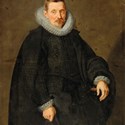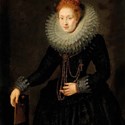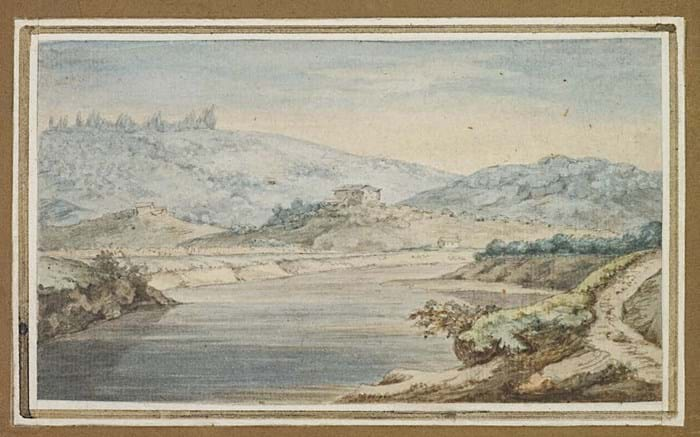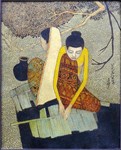The potential top lot of Dorotheum’s (25/22% buyer’s premium) Old Masters sale in Vienna on April 25 lived up to its expectations.
This 16in x 5ft (41cm x 1.57m), wooden panel painted in tempera showed the Battle of Pharsalus (which culminated in a decisive victory of Julius Caesar over Pompey and was in effect the final battle of the civil war).
The panel was originally the side of a cassone, a highly decorated chest popular in wealthy Italian families in the 15th and 16th centuries. The artist responsible was the Florentine master Apollonio di Giovanni (c.1415-65).
In 1890 the panel was auctioned in Paris together with its pendant (Julius Caesar at the Siege of Pharsalus) as part of the collection of Eugène Piot and later belonged, among others, to the American mining magnate Edward Julius Berwind of Newport, Rhode Island. In recent decades it was owned by a European collector. On auction day several bidders drove the price to €550,000 (£470,085).
But a more unexpected bidding battle emerged for a pair of portraits loosely attributed to the Antwerp School c.1620. The intriguing 4ft 3in x 3ft 2in (1.3m x 97cm) canvases showed a man in a white ruff and a lady with a fan and were consigned from an unnamed European noble collection.
In the catalogue at €30,000, the pair attracted numerous bidders, who obviously had their own opinions about either the sitters and/or the artist who portrayed them.
The auctioneers have no further information about either, nor were they able to reveal the identity of the anonymous purchaser, who was convinced he knew more about these works as he ended up bidding a substantial €380,000 (£324,790).
At some time in the future, all will presumably be revealed.
Man of many talents
Johann Wolfgang von Goethe (1749-1832) was a man of many talents. He was not only Germany’s most celebrated poet and dramatist, but also a successful statesman.
He dabbled in the sciences and developed a theory of colours. If that was not enough, he was also a proficient painter of watercolours, as shown on May 19 at Van Ham (28/25% buyer’s premium) in Cologne. In a letter to a fellow poet from 1787, while travelling in Italy, Goethe mentioned 10 watercolour landscapes he had painted.
His 4 x 7½in (11 x 19cm) drawing in pen, ink and watercolour, Landscape with the River Tiber, with a View of the Villa Madama has belonged to a Hamburg collector and her descendants since the late 1950s.
An extra attraction was its earlier provenance: on the reverse of the sheet was not only Goethe’s own description of the motif, but also a handwritten inscription by Alexander von Humboldt, the renowned explorer, scientist and philosopher, who was presumably presented with the drawing by Goethe. The historic importance was not lost on the numerous bidders who pushed the price from the estimated €40,000 to €160,000 (£136,750), at which point a private collector finally outpaced a German museum.
This was by far and away a new record. The previous one was set at Christie’s in London in 2005, when a view of The Ramparts of Luxemburg sold for £28,000.
As was to be expected, the painting Arabian Rider Being Attacked by a Lion by Raden Saleh Ben Jaggia (1811-80), previewed in ATG No 2291, brought considerably more than the guide of €30,000-50,000, selling to an Indonesian collector for €120,000 (£102,565).
£1 = €1.17



